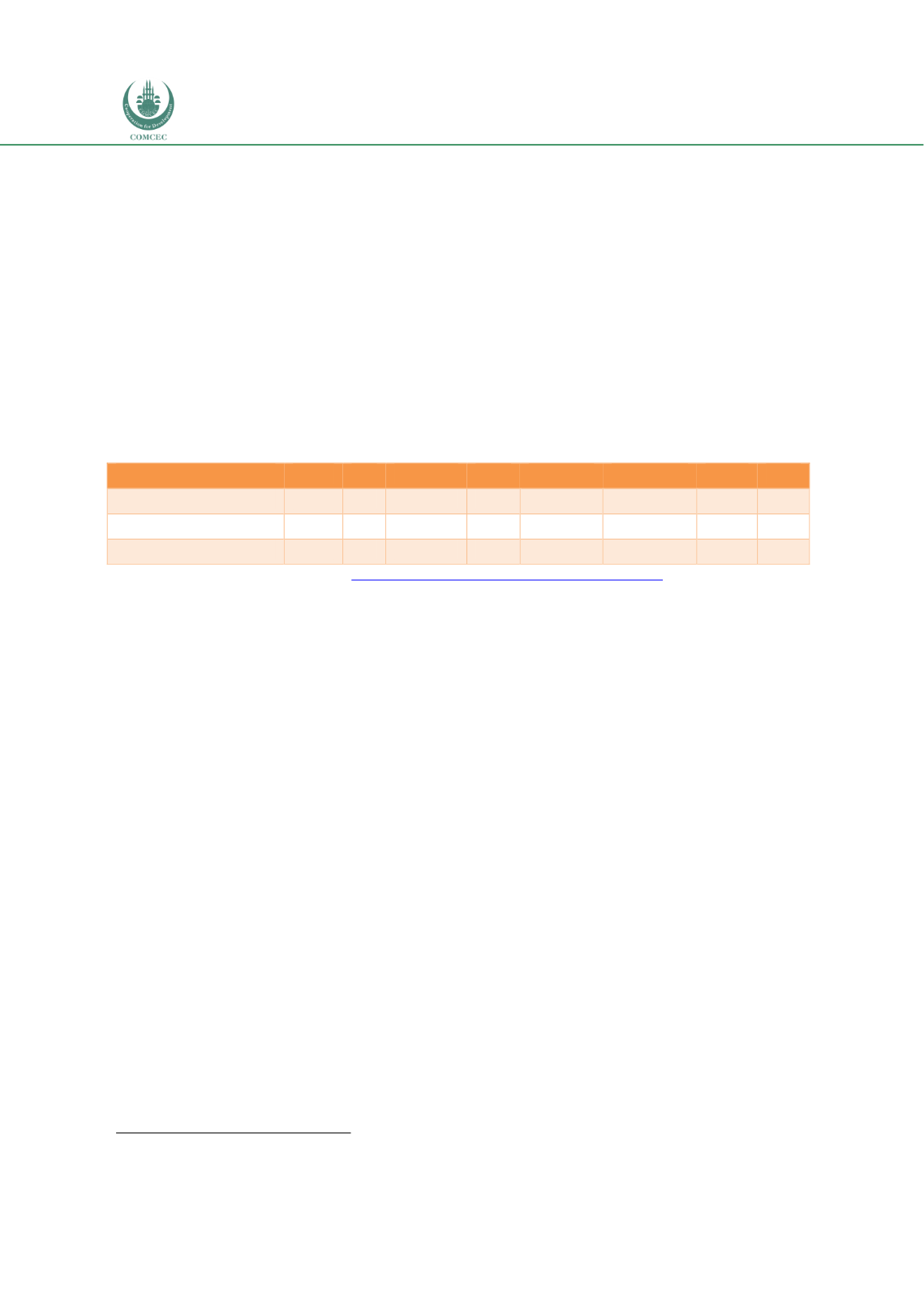

Infrastructure Financing through Islamic
Finance in the Islamic Countries
128
execution.
63
The projects related to electricity and power have the largest share, with
investments valued at USD 274.8 billion followed by railway projects worth USD 90.9 billion
and airports and other infrastructure at USD 72.1 billion. The projects in the water and
sewerage sector are valued at USD 4.5 billion and investments for road projects amount to USD
4.4 billion.
The projected investment needs in different infrastructure sectors in terms of current trends
and the projected investments needs during 2016-2040 are shown in Table 4.4.1. The total
investments according to current investment trends leading to 2040 are estimated at USD 499
billion while the actual investment needs would be USD 613 billion, showing a deficit of USD
215 billion. Most of the deficits will be in building roads (with projected deficits of USD 82
billion) followed by electricity (USD 14 billion) and telecoms (USD 10 billion).
Table 4.4. 1: Infrastructure Needs and Gaps Saudi Arabia 2016-2040
(Billion USD 2015 prices and exchange rates)
Road
Rail Airports
Ports Telecoms Electricity
Water Total
Current trends(CT)
151
10
12
21
34
208
62
499
Investment need (IN
233
11
12
21
44
222
69
613
Gap between IN and CT
82
2
0
0
10
14
8
115
Source: Global Infrastructure Outlook
, https://outlook.gihub.org/countries/SaudiArabia4.4.3.
National Level Policies and Framework of Infrastructure Development
Before the launching of Vision 2030 in 2016, various strategic decisions were undertaken for
the development of some specific infrastructure sectors. For example, the National
Transportation Strategy (NTS), under the Ministry of Transport, mandated in 2002 (1423H) by
a Royal Decree to coordinate the development of the NTS (NTS Transport KSA, 2011). It
started through an initial discussion with all concerned Ministries and agencies to identify
three development phases and a consensus was reached to address the needs for the transport
sector (Al Rajhi et al, 2012).
The current Saudi Arabian development agenda is driven by Vision 2030. Vision 2030 has 96
strategic objectives under the three pillars of
a vibrant society, a thriving economy
and
an
ambitious society
. Strategic goals under a thriving economy include growing and diversifying
the economy and investing in the long-term. Key aspects of Vision 2030 are to reduce the
dependence of oil and the role of the public sector in the economy.
Traditionally, infrastructure has been funded and managed by the government either through
direct procurements or indirectly by using state-owned enterprises to provide infrastructural
services. The role of the private sector was recognized in 2002 when the Supreme Economic
Council approved privatization procedures and transferred certain public services provided by
state-owned companies to the private sector. The state-owned companies listed for
privatization included infrastructure related to water supply and drainage, water desalination,
telecommunications, power, air transportation and related services, railways, some sectors of
roadways, postal services, seaport services, educational services, and health services.
As a
result of the privatization strategy, the Saudi Telecommunications Company (STC) floated
63
https://www.reportbuyer.com/product/5086601/infrastructure-insight-saudi-arabia.html















